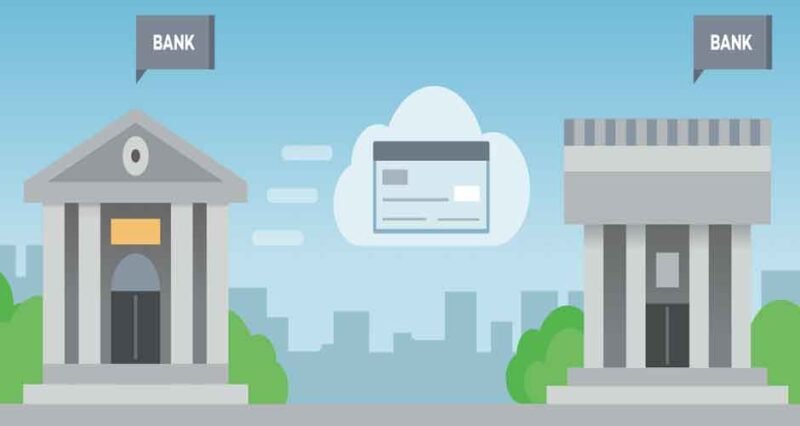
ACH payments allow businesses and their customers to transfer funds from their bank accounts instead of using a paper check, wire transfer, or credit card. It can benefit many companies as it helps improve payment processing times and reduces the workload of finance controllers. ACH transactions can be broken down into two types: ACH credits and ACH debits. This article will help you understand what each kind of transaction entails.
How ACH Works
ACH transfers, also known as direct payments or direct deposits, move money between bank accounts using instructions provided by the Automated Clearing House network. It’s one of the main ways consumers and businesses transfer money and is often a more cost-efficient and user-friendly option than writing checks or paying with a credit card. Generally speaking, ACH transactions take a few business days because they’re processed in batches rather than in real time.
Depending on whether the transaction is an ACH debit or ACH credit, it could require more time to settle. For example, if your insurance company wants to collect payment from your bank account via ACH, it sends your account details and the ACH transaction data files to an ACH operator or ODFI (Originating Depository Financial Institution). These operators sift through the batch of entries to confirm that they’re both a debit and a payment.
Afterward, they send the data file to your customer’s bank, the RDFI (Receiving Depository Financial Institution). The RDFI then pulls the funds from your customer’s bank account, completing the transaction. Since ACH payments are processed through a single clearing house, they offer greater security than cards or wire transfers.
It makes them ideal for business-to-business remittances or transactions requiring simultaneous payments. An ACH transfer can be used for various business operations, including paying staff. The functionality of direct deposit for employees depends on ACH payments. But what is an ACH payroll? Your employees’ bank accounts are credited with funds transferred from your company’s bank account. The use of direct deposit in place of paper checks is effective. Checks don’t need to be printed, written, or distributed. Additionally, workers are not required to visit the bank each pay period.
ACH Routing Numbers
While ACH is commonly associated with direct deposit of paychecks or recurring bills, it also enables other electronic transactions that don’t require cash, wire transfers or credit card networks. With many of these payments being made online, it’s important to understand how the ACH network works, including its rules and fees. An ACH (an ABA routing number) is a nine-digit code that identifies a bank in a specific state. These codes differ from the routing numbers on paper checks, which use only eight digits and are unique to each customer account.
If you’ve ever logged in to your bank account online, you’ll likely see your ACH routing number alongside your bank account number on the left side of your checkbook. This information is often available on your bank’s website, though you may need to look under “ACH routing numbers” or a similar heading. The ACH network is open 23 14 hours each business day and settles payments four times daily. While ACH isn’t instant, the process is much quicker than sending and receiving paper checks or online banking transfers.
ACH Processing Fees
When using the ACH network to process payments, it’s important to understand its fees. ACH transactions carry lower transaction costs than credit card payments, making them an attractive option for accounts payable teams looking to streamline their payment processes. The ACH network is a centralized system that moves money between bank accounts across the US. During a typical ACH transaction, an ODFI sends a request to an RDFI asking to transfer money from the account of one party to the account of another. The RDFI then verifies the information, checks for the correct account number and routing number, and whether there’s enough money to cover the transaction before letting the ODFI “pull” the funds from the account.
For example, when a consumer enrolls in autopay for their monthly phone bill with an ACH debit, they provide their banking information and sign a recurring payment authorization. Their phone company then initiates the ACH debit, and their bank (the ODFI) transfers the money to their bank (the RDFI). These bundled digital batches are subsequently processed on a regular schedule. As the transaction progresses, member banks report returns to the ACH operator. The ACH operator then decides on the appropriate action, such as returning the payment or changing the transaction amount. The ACH operator then transmits the results of these decisions to all parties involved in the transaction.
ACH Entry Classes
The Standard Entry Class (SEC) code is important to any ACH transaction. SEC codes are three letters that identify how an ACH debit or credit is processed. The SEC code will tell you whether a payment is one-time or recurring and what type of account the money is being transferred from and to. Using the ACH Network to collect payments is a cost-efficient and user-friendly option for businesses, especially when accepting recurring payments. Instead of dealing with the hassle and expense of collecting payments via invoicing or credit cards, ACH allows you to offer your customers a convenient, secure alternative that eliminates the need to remember to pay each month and reduces the likelihood of late or missed payments.
In addition, ACH provides you with four ACH settlement windows per day for fast and predictable processing. It means you can plan and forecast your cash flow with greater accuracy. The ACH Network includes many types of transactions, but two of the most popular are direct deposit and online bill payment. Direct deposit lets employees receive their paychecks electronically, while online bill payments let consumers easily pay companies for products or services. ACH supports both use cases, but there are also other ACH transactions, such as an account-to-account transfer, government benefits, tax refunds and interest payments.

